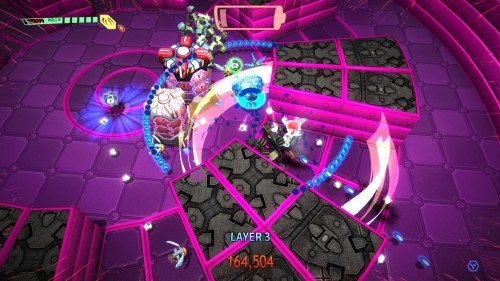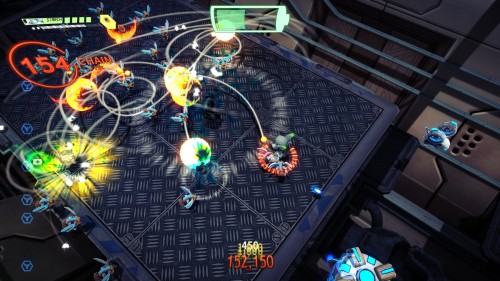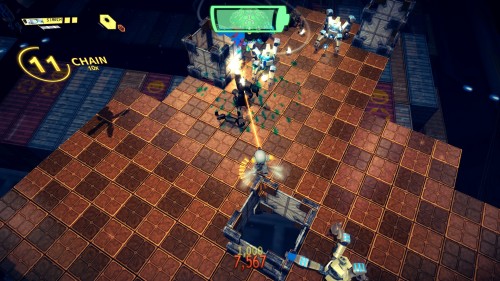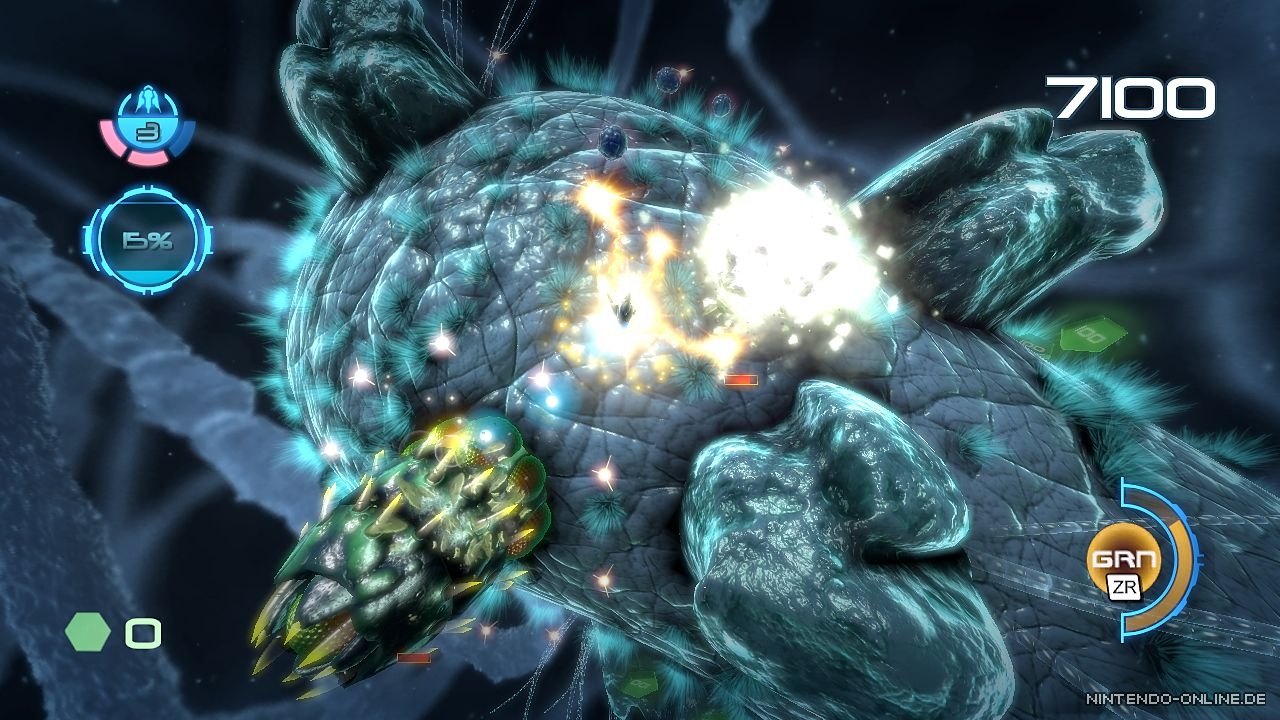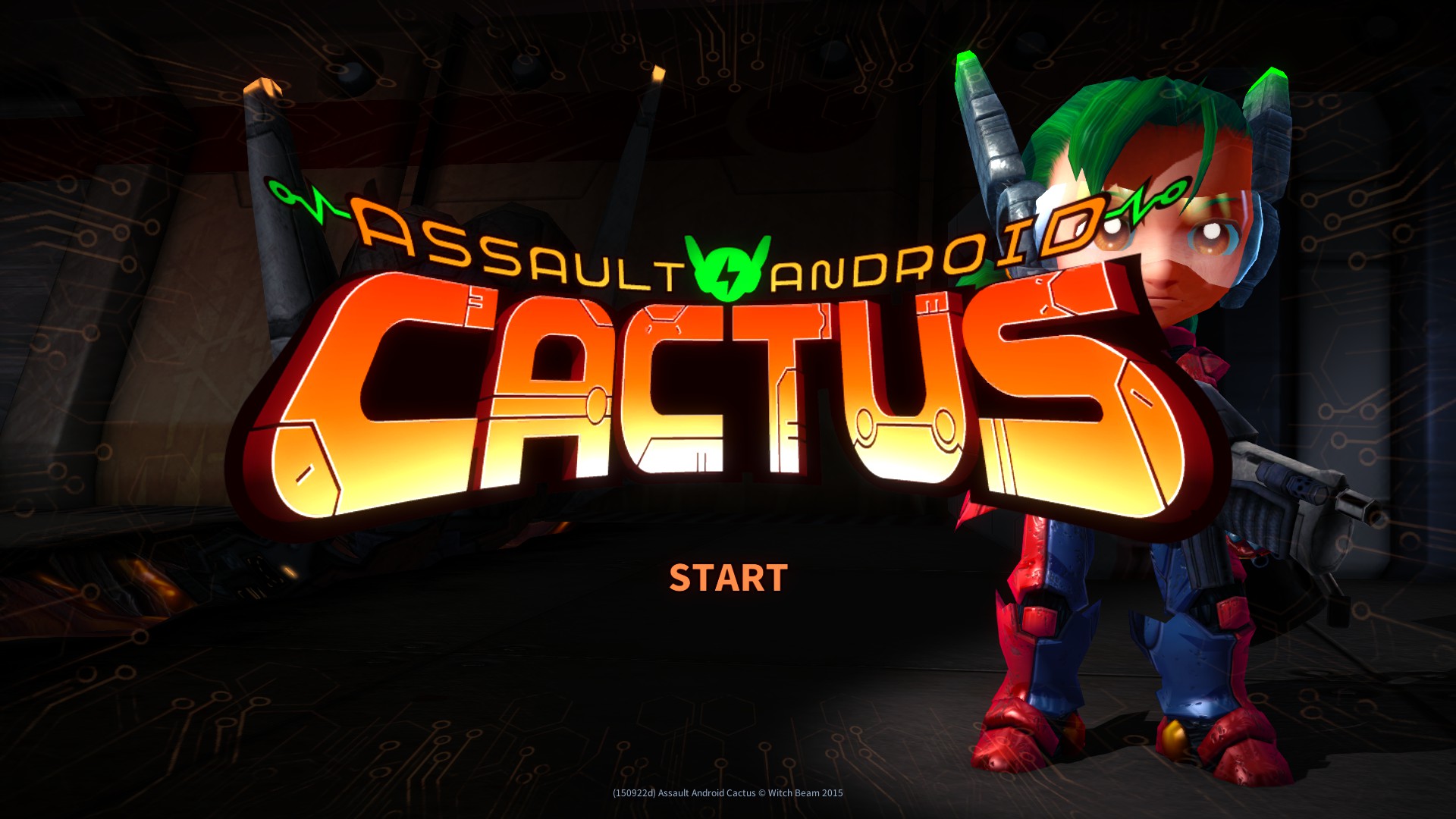
I can’t remember exactly when it was I first became aware of Assault Android Cactus, but I remember seeing it in action and thinking that it could not possibly be as good as it looked. I admit to being somewhat wary due to the fact that, in general, I’ve found twin-stick shooters to be much more about potential than reality. But hey, I’m always on the lookout for one that will offer what I’m looking for. When Assault Android Cactus said it borrowed some ideas from the bullet-hell genre, I was skeptical. I’m a big fan of such games, so when the phrase gets thrown about, as it all too often does, my ears perk up. I wondered, to myself, if this game will be the game to actually deliver? Will it scratch my longstanding bullet-hell itch?
Assault Android Cactus doesn’t just scratch it, it gives a sensuous backrub and shoulder massage as well. This is as perfect a twin-stick shooter as I’ve ever played. It’s difficult to believe that the game was developed by, essentially, three people given the tightly tuned action and polished presentation shown here.
Like all good shooters, AAC goes light on the plot. There is one, but it’s mostly avoidable during the game, and never gets in the way of shooting at things. The shooting itself is done by a selection of adorable feminine androids, from the titular Cactus through to the rough-and-tumble Peanut; the secretarial Holly and the plain-out ditzy Starch. Each one has both a unique personality and playstyle, which is an impressive feat given that there’s eight to choose from (plus a ninth that unlocks after beating the game).
Each android has a primary weapon and a secondary weapon that activates for a short time, but needs to cool down before activating again. Learning when and how to use the secondary weapons is the key to success. While the primary weapons are your bread-and-butter tools for destroying enemies, the secondary weapons are the heavy lifters, and much of the strategy for beating anything is determined by how well you can use them. It shows just how well-designed the game is that this is such a strategic choice.
Well-designed adorable robot girls is just one side of Assault Android Cactus’ equation. The other is the level design itself. Levels are generally tight arenas with clever layouts that offer both strategic advantages and potential traps. The twist here is that many levels have a dynamic element to them, meaning they change in some way as you fight. For some levels, this may mean that different portions of the floor rise or fall away, creating barriers and gaps to work around. Other levels expand or contract, and a few levels even construct themselves around you as you fight through them.
All of this combines with a playful sense of humour and a bright, crisp art style that clearly conveys the action as it happens to make one of the most wonderful games I’ve played this year. The controls are nice and responsive, and it never feels like the game has cheated you out of a win. The enemy waves always feel manageable, or at least like they could be manageable if you just did things a little differently, and the incoming threats to your android’s health are very clear to see.
Not that dying is a major concern in Assault Android Cactus. Instead, your success in a level depends on your battery meter, a big green presence at the top of the screen. Essentially a timer, keeping it charged up is the main objective in every level, as running out leads to failure. Fortunately, this is easily done, as battery drops are frequent. You also have a health meter, and running out of health results in being knocked down for a few moments. This costs precious time, meaning that it can be the difference between charging your battery and running out. I’m sure there’s some commentary about how the timer has been updated for the iPhone generation, but I had no problems with it.
There’s also three power-ups that can be collected, but which aren’t really essential to victory. The first, Firepower (or, as Starch refers to it, “Tiny robots!”), adds two option pods to your side for extra forward damage. Then there’s Accelerate (“Pretty wings!”), which increases your movement speed; and finally there is Shutdown (“Blue circles!”) which temporarily shuts down any enemy caught in its radius. While they generally won’t mean the difference between success and failure, good power-up maintenance can certainly help, and may be the difference between a high score and a less-high score.
The scoring system itself is a fairly straightforward combo-chaining system with an increasing multiplier. Unlike a lot of games that use such systems, Assault Android Cactus doesn’t end up feeling like score is solely determined by survival time. Optimising scoring strategies is definitely possible, and maintaining big chains is important. Also important is not running out of health: Any death results in a 10% score penalty, capped at 100000 points. These can add up, and a few careless deaths can see a reasonably good scoring run fall down dramatically.
If Assault Android Cactus has a flaw, it’s that it offers only a local multiplayer. This makes sense on console (and I have no doubt we’ll be seeing it on at least the PS4 eventually), but on the PC it’s a lot harder to take. I fully understand why, on their first try, Witch Beam have chosen to eschew online multiplayer, but it still stings. If a sequel does eventuate, I’d fully expect it to be a key feature.
As someone who’s philosophy on games is that you should always try to play for the best score, I found Assault Android Cactus really, really satisfying. The controls are responsive and easy to pick up (it’s definitely a game that works best with a controller), and the game itself has nice, simple fundamentals that mean anyone can get into it. It mixes this simplicity up with some incredibly intense action and really, really cool level designs. If you’re looking for a solid twin-stick shooter that’ll keep you coming back for more, then look no further.
Fantastic twin-stick shooting
Adorable robots
Great level design
No online multiplayer
Perhaps a little too easy for experienced shooter players

